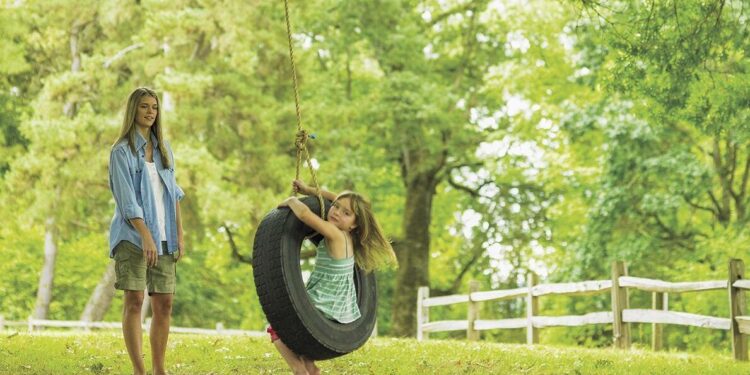Most homeowners are looking for a strong, beautifully shaped, relatively insect and disease-free tree that exhibit bright colors in the fall. The best tree to fit that bill is the mighty oak.
The only drawback to planting oaks is their slow growth to maturity. It usually takes ten years to get a mature tree, but can live 75 to 100 years.
The oak tree is divided into two sub-group, white oak and red oaks, each containing numerous species. Because of plant breeding, there are numerous hybrids within each group. The genus, Quercus, has several features that aid in identification of both groups.
Probably the best characteristic of white oak is that the leaves are rounded at the tips with no sharp bristles or points. A light gray or brown bark generally develops and become scaly or flaky. The acorns mature in a single season and are generally sweet to the taste. Seeds will germinate as soon as mature, but must be stored.
The red oak is a large and variable group of oaks, with the northern red oak being the most widely used tree in the landscape. Many red oaks are slightly faster growers than the white oaks. Leaves can be distinguished by their bristle-tipped lobes or with no lobes as in case of the shingle oak or the willow oak. The bark is generally dark gray to gray- black and is smooth when young and hard and ridged with maturity, but not flaky.
Acorns of the red oaks take two seasons to mature and are bitter when tasted. Acorns remain small the first season and grow rapidly the second season. Seeds must be cold stored over winter or left outdoors before germination will occur. There are over 600 species of oak, all of which grow naturally in the United States. In western Oklahoma only five are recommended for use in the landscape. Oak trees are not normally soil in the box stores so trees will have to be ordered from retail nurseries. They can also recommend trees that will fit our Southwest Oklahoma landscape.
The northern red oak is round or oval form with very deep green foliage that gives it a characteristic somewhat unique. Since they can reach heights of 80 to 120 feet and a spread of 60 to 80 feet, plant this oak far away from structures so that there is plenty of room for lateral growth.
The bur oak is a large round-headed tree with bold, heavy branches. It is a slow to moderate grower that is extremely tough and durable, tolerating poor soils and low rainfall. Very coarse texture bark makes it an interesting tree to use in the landscape.
The chinquapin oak is an irregular, asymmetrical round-topped tree. It generally develops a low spreading crown with low branches, with a somewhat unusual form. When planted as a single stem tree in a landscape it develops a short trunk and a broad low crown, becoming a massive low shade tree.
The live oak is one of the most spectacular trees in the landscape. Although it does not attain tremendous height in this area, it is magnificent in stature and portions. It tolerates city conditions such as poor, abused soils and compaction around the roots.
Sawtooth oaks get their name from the saw tooth margins on the edge of the leaves. This oak is widely adapted to a variety of soil conditions and is a moderate to rapid grower.
The Shumard oak is superior and should be planted in place of the pin oak. The Shumard is a large desirable shade and ornamental tree, which has bright red-orange to orange, colors in the fall. This broad oval tree is a moderate to rapid grower. Pin oak cannot tolerate our alkali soil so should be avoided completely.
Jim Coe lives in Lawton and writes a weekly gardening column for The Lawton Constitution.
Want to reach a local audience and grow your business?
Our website is the perfect platform to connect with engaged readers in your local area.
Whether you're looking for banner ads, sponsored content, or custom promotions, we can tailor a package to meet your needs.
Contact us today to learn more about advertising opportunities!
CONTACT US NOW





